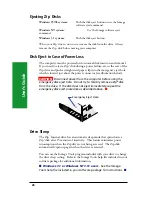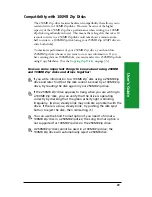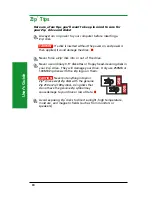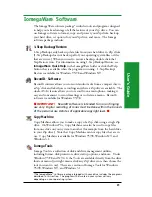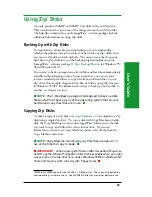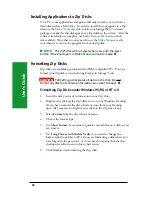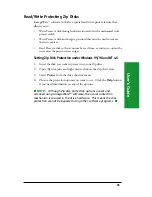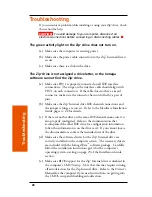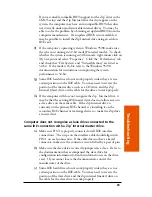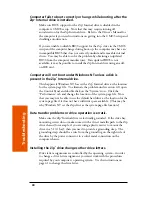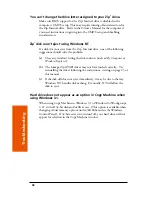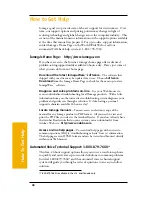
Tr
oubleshooting
39
If you are unable to disable BIOS support for the Zip
®
drive in the
CMOS setup and the Zip Internal drive does not appear on the
system, the computer may have an incompatible BIOS that does
not correctly understand removable internal drives. You may be
able to solve the problem by obtaining an updated BIOS from the
computer manufacturer. If an updated BIOS is not available, it
may be possible to install the Zip Internal drive using an add-on
IDE card.
(f) If the computer’s operating system is Windows 95/98, make sure
the system is running in 32-bit mode (Protected mode). To check
whether the system is running in 32-bit mode, right mouse click on
My Computer
and select “Properties.” Click the “Performance” tab
and check that “File System” and “Virtual Memory” are listed as
32-bit. If the mode is 16-bit, refer to the Windows 95/98
documentation for instructions on improving the system
performance to 32-bit.
(g) Some IDE hard drives do not work properly unless they are in a
certain position on the IDE cable. You may need to reverse the
position of the master drive, such as a CD drive, and the Zip
®
Internal (slave) drive on the cable for the drives to work properly.
(h) If the computer still does not recognize the Zip
®
Internal drive, it
may be that the existing IDE master drive does not allow access to
a slave drive on the same cable. If the Zip Internal drive is
currently on the primary IDE channel, try installing it on the
secondary IDE channel or rearrange devices to make the Zip drive
a master drive.
Computer does not recognize a slave drive connected to the
same IDE connection with a Zip
®
Internal master drive.
(a) Make sure PIN 1 is properly connected on all IDE interface
connections. The stripe on the interface cable should align with
PIN 1 on each connection. If the cable does not have a keyed
connector, make sure the connector is not shifted by a pair of pins.
(b) Make sure the slave drive is correctly jumpered as a slave. Refer to
the documentation that accompanied the slave drive for
configuration information (often this information is on the drive
case). If you cannot locate the documentation, contact the
manufacturer of the drive.
(c) Some IDE hard drives do not work properly unless they are in a
certain position on the IDE cable. You may need to reverse the
position of the slave drive and the Zip internal (master) drive on
the cable for the slave drive to work properly.




